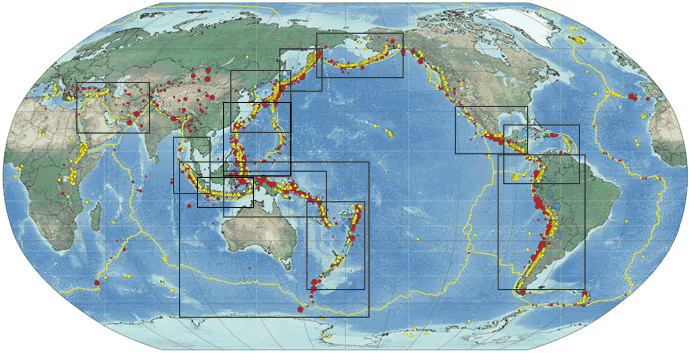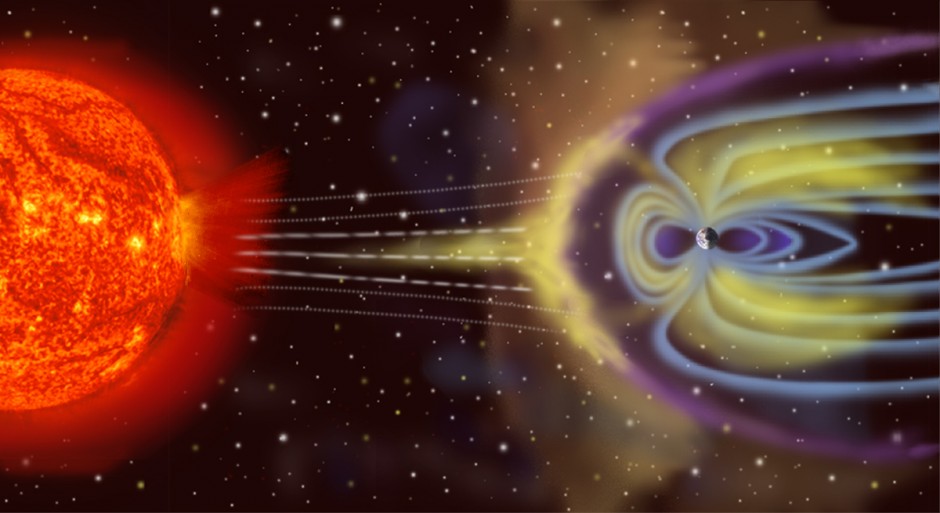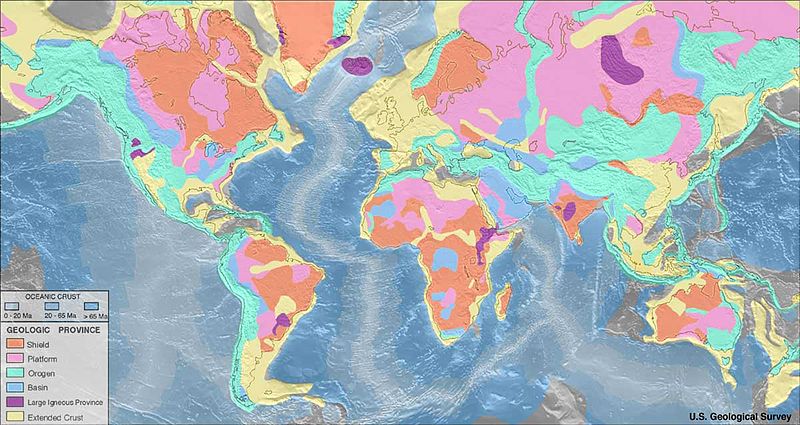Here is the second instalment in our series covering the biggest unknowns in the Geosciences.
Last week we explored what it is about the Earth’s origin that still remains unclear and this week we probe the Earth’s deep interior. Unlike in Jules Verne’s Journey to the Centre of the Earth, there are no volcanic tubes we can climb down which will allow us to discover the inner workings of our Planet. Direct understanding can only be gained from rock samples; our inability to collect those at depths in excess of 12 km means direct observations are restricted to the Crust. How do we know what happens far down below? We have to rely heavily on indirect measurements such as seismic wave tomography, together with geodynamic and petrological modelling. But, really, how confident can we be, considering we can’t really ‘see’ into the centre of the Earth, that our hypotheses are correct? Only this week, new research casts doubts over the long established theory that hot spot volcanism is fed by deep rooted mantle plumes. This highlights just how important it is to continue efforts to push our understanding and find new and innovative ways to journey into the centre of the Earth.
The Earth’s Interior
- What are the chemical composition and mechanical properties of rocks in the Earth’s mantle at the extreme pressure and temperature they undergo? As planets age and cool off, their internal and surface processes coevolve, chemically and mechanically, shaping in turn the atmospheric composition. Therefore this question has direct implications for our understanding of the environmental evolution of the Earth. (Kerr, 2005, Science)
- What are the dynamic processes in the Earth interior that accommodate and fuel plate tectonics? As seismometers spread more evenly over the planet’s surface, the seismic imaging of the interior will rapidly improve, providing a detailed distribution of seismic wave velocity. Simultaneously, lab-based mineral physics must better constrain what these mechanical wave velocities tell us about the hot, deep rocks of uncertain composition in the mantle. Only then will computer models be able to test the currently proposed geodynamic models by trying to quantitatively fit those data with other geophysical observations such as gravity variations. (Kerr, 2005, Science)
- How does the Earth’s magnetic field work? Sedimentary and volcanic rocks have recorded changes of the magnetic field throughout the evolution of the Earth. What causes the sudden reversals of the paleomagnetic field? What caused the long periods (more than 10 Myr) with no magnetic inversions (superchrons)? How does the geomagnetic field link to the iron convection properties at the deep Earth? Or inversely, what can we learn about the mechanical behavior of the materials at those depths from the geomagnetic field? (see this nature paper for further context). Are the magnetic reversals too fast to be related to core dynamics? (Biggin et al., 2012, Nature Geoscience). Could their frequency be related to the distribution of tectonic plates? (Pétrélis et al., 2011, GRL). What causes superchrons (periods without reversals)? Something internal within the core, or is it induced externally by the mantle/subducting slabs? Was the geomagnetic field always dipolar, or was it more asymmetric in the past, as suggested in by Biggin et al., (2012)?
- What makes the magnetic field change between reversals? What is the history of and what controls the excursions of the rotation pole relative to the surface geography, known as true polar wander? (Creveling et al., 2012, Nature).
- How do hotspots come about? Are intraplate hotspots really made by deep sources of uprising materials (mantle plumes) coming from the deepest Earth’s mantle? Or can they be explained by shallower convection? (e.g Morgan, 1971, Nature and Fouch, 2012, Geology)
- What are the properties of deep rocks? How can we translate the heterogeneity in density, seismic wave velocity, and electromagnetic resistivity presently observed in the mantle and the lithosphere into variations of the mineralogical composition? And how do these measures relate to the dynamics of the Earth and to key mechanical properties such as the viscosity? (Faccenna & Becker, 210, Nature)]
- What are the causes for and massive flood basalts such as the Columbia River Basalts?
Do you think these seven questions cover the fundamental issues yet to be addressed when it comes to the Earth’s deep interior? If you’d like to add to this discussion, please feel free to voice your opinions using the comments section below, we really would love to hear from you!
Enjoyed these seven questions? Why not explore the first post in the series?
Coming up next: Plate tectonics and deformation.
By Laura Roberts Artal, EGU Communications Officer, based on the article previously posted on RetosTerricolas by Daniel Garcia-Castellanos, researcher at CSIC, Barcelona




Pingback: The known unknowns – the outstanding 49 questions in Earth sciences (Part III) | GeoLog